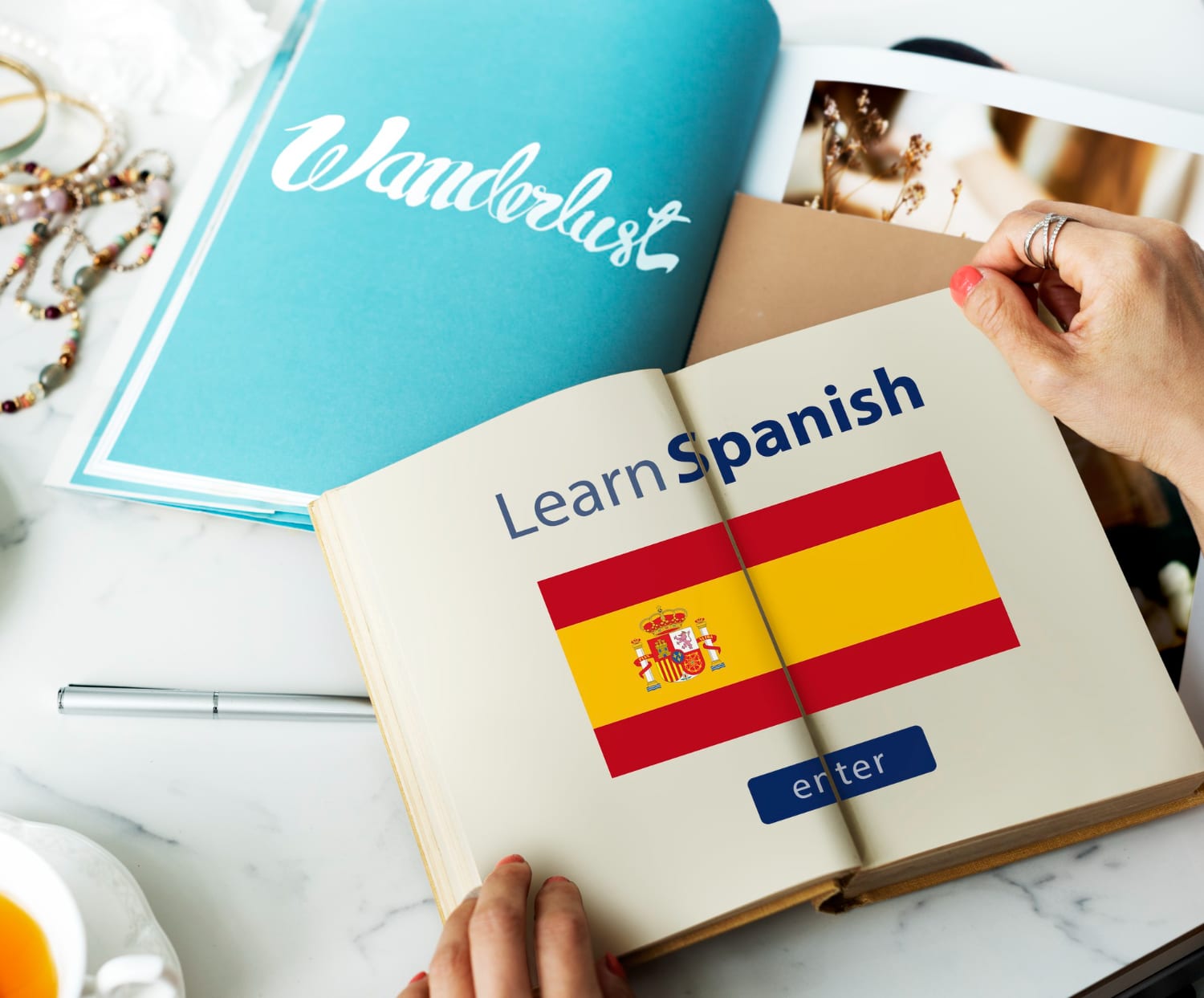
How to Learn a New Language on Your Own
In our globalised world, speaking multiple languages is a valuable skill. Learning a new language is rewarding. It can help you travel easily, improve your career, or deepen your cultural knowledge. However, the idea of self-study can be daunting for many.
This guide will help you learn a new language on your own. It covers the best methods, practical tips for fluency, and top free apps you can use now. You can become fluent by using the right strategies and resources. Formal classes aren’t necessary.
Pro Tip: Embrace mistakes as part of the learning process. Every error is an opportunity to refine your skills and improve your fluency. Don’t shy away from making them!
Quick Guide: How to Learn a Language Independently
- Set Clear Language Goals: Define fluency levels and set short-term and long-term goals for your language learning.
- Choose Learning Resources: Find resources that match your learning style, whether visual, auditory, or kinesthetic.
- Use Free Language Learning Apps: Try Duolingo, Memrise, or Anki to boost your vocabulary and grammar skills.
- Immerse Yourself: Watch foreign films, listen to music, and change your device language to increase exposure.
- Practice Speaking Regularly: Use apps like Tandem or HelloTalk to practice with native speakers or record yourself speaking.
- Create a Structured Study Plan: Dedicate daily time slots to different language skills for balanced learning.
Important Tip: Don’t rely solely on translation. Try thinking in the target language to develop a deeper understanding and enhance fluency.
Why Learning a New Language Matters
Learning a new language independently offers several advantages:
1. Complete Control Over Your Learning Pace
- Flexible Schedule: You can study whenever it suits you, making it easier to fit language learning into a busy lifestyle.
- Personalised Methods: Choose learning techniques that match your style, whether it’s through reading, listening, or interactive exercises.
2. Deeper Engagement with the Language
- Cultural Exploration: When you direct your own learning, you’re more likely to explore cultural contexts, which deepens your understanding of the language.
- Enhanced Retention: Self-driven learners tend to retain knowledge better by actively seeking relevant and meaningful materials.
3. Real-Life Applications
- Career Growth: Bilingualism is a sought-after skill in many industries, making you more competitive in the job market.
- Improved Travel Experiences: Knowing the local language can make your travel experiences richer and more immersive.
- Personal Development: Language learning improves memory, cognitive abilities, and problem-solving skills.

Step-by-Step Guide: How to Learn a Language Independently
1. Set Clear and Achievable Language Goals
Before you begin, define what fluency means to you.
- Identify Your Objective: Do you want to be conversational, achieve business-level proficiency, or simply understand basic phrases?
- Set Measurable Goals:
- Short-term: Learn 100 new words in one month.
- Long-term: Hold a five-minute conversation with a native speaker within six months.
- Track Your Progress: Use language learning journals or apps like Notion or Trello to monitor your milestones.
2. Choose the Right Learning Resources
Selecting the appropriate resources based on your learning style is essential for effective language acquisition.
- For Auditory Learners:
- Listen to language podcasts (Coffee Break Languages, Language Transfer).
- Use language tapes or audiobooks during commutes.
- For Visual Learners:
- Use textbooks, flashcards, or apps with visual aids.
- Watch YouTube videos or language tutorials.
- For Kinesthetic Learners:
- Engage in interactive activities, such as role-playing conversations or language exchange meetups.
3. Use Free Language Learning Apps
Technology makes language learning more accessible and convenient. Here are some of the best free apps to use:
- Duolingo: Offers gamified lessons that build vocabulary and grammar skills.
- Memrise: Uses spaced repetition to improve retention of words and phrases.
- Anki: A flashcard app that uses an intelligent algorithm for effective memorisation.
- HelloTalk or Tandem: Connect with native speakers for language exchange.
- BBC Languages: Provides free resources for a variety of languages, including video lessons and audio materials.
4. Immerse Yourself in the Language
Immersing yourself in the language is one of the most effective ways to build fluency.
- Watch Foreign Films and TV Shows: Watch with subtitles initially, then gradually switch to native-language subtitles or none at all.
- Listen to Music: Learn lyrics and sing along to practice pronunciation.
- Read Books and Articles: Start with children’s books or easy articles, then progress to more complex materials.
- Change Your Device Language: Switch your phone, apps, and computer to the target language for daily exposure.
5. Practice Speaking Regularly
Speaking is often the most challenging aspect of language learning but is essential for fluency.
- Language Partners: Use apps like Tandem, HelloTalk, or Speaky to practice with native speakers.
- Self-Recording: Record yourself speaking and listen back to improve your pronunciation and identify areas for improvement.
- Talk to Yourself: Narrate your daily activities or describe objects around you in the target language to build confidence.
6. Create a Structured Study Plan
To maintain consistency, create a structured and realistic study schedule.
- Daily Study Sessions: Commit to at least 30-60 minutes of language learning daily.
- Use Time Blocks: Dedicate specific time slots to different language skills (listening, speaking, reading, and writing).
- Combine Active and Passive Learning: Use active study techniques (grammar exercises) alongside passive learning (listening to podcasts).
Additional Expert Tips for Self-Learners
To maximise your language learning efforts, implement these expert tips:
1. Be Consistent
- Daily Practice: Short, daily study sessions are more effective than occasional long ones.
- Stick to a Routine: Set aside a consistent time each day for language practice.
2. Embrace Mistakes
- Don’t Fear Errors: Making mistakes is a natural part of language learning.
- Learn from Corrections: When native speakers correct you, see it as a valuable opportunity for improvement.
3. Stay Motivated
- Set Milestones: Celebrate small victories, such as mastering a set of vocabulary or holding a short conversation.
- Join Language Learning Groups: Connect with online or local language learners for support and motivation.
Common Mistakes to Avoid
When learning a language independently, avoid these common pitfalls:
- Relying Too Heavily on Translation: Try to think in the target language rather than translating every sentence.
- Neglecting Speaking Practice: Reading and writing alone won’t make you fluent. Prioritise regular speaking practice.
- Lack of Structure: Random learning makes it harder to track progress. Follow a clear plan with specific objectives.
Advanced Strategies for Language Mastery
Once you’ve built a foundation, challenge yourself with these advanced techniques:
1. Engage with Native Speakers
- Hire a Tutor: Use platforms like iTalki or Preply to book affordable lessons with native speakers.
- Join Immersion Programmes: Travel or participate in language exchange programmes for full immersion experiences.
2. Explore Cultural Contexts
- Learn About Traditions and Customs: Understanding the cultural nuances of a language improves comprehension and fluency.
- Engage with Authentic Media: Watch news, listen to radio shows, or read newspapers in the target language.
3. Tackle Complex Materials
- Read News and Academic Articles: Gradually expose yourself to complex sentence structures and advanced vocabulary.
- Join Language Forums: Participate in online discussions or read blogs in the target language.
Frequently Asked Questions (FAQs)
1. How long does it take to learn a new language independently?
It depends on the language and your study consistency. Practice regularly for 30 to 60 minutes each day. You can reach conversational fluency in 6 to 12 months. More complex languages (like Mandarin or Arabic) may take longer.
2. What is the most effective self-learning method for language fluency?
Immersion combined with regular speaking practice is the most effective. Engage with native speakers, consume media in the target language, and consistently practice all four skills: listening, speaking, reading, and writing.
3. Can you become fluent using language learning apps alone?
Apps are excellent for building vocabulary and grammar, but fluency requires speaking practice. Combine app learning with real-life conversations for better results.
4. How can I stay motivated when learning a language on my own?
Set milestones and reward yourself for reaching them. Joining language groups, finding a partner, or using journals and apps can help you stay motivated.
5. What should I do if I hit a language learning plateau?
Change your methods. You can introduce new resources, use advanced materials, or try immersive activities. For example, watch films without subtitles or read content meant for native speakers.

Mastering a New Language: The Ultimate Guide to Self-Learning and Fluency
Learning a new language on your own is a challenging yet rewarding endeavour. Using a clear plan and the right language learning methods, you can become fluent on your own. Set clear goals. Use free language learning apps. Immerse yourself in the language as much as you can.
The journey of language learning is continuous, and every step forward is a victory. Embrace the process, celebrate your progress, and keep pushing your boundaries. When you become fluent on your own, you’ll discover new chances and views. These will enhance both your personal and professional life.
Are you ready to embark on your language-learning journey? Start today, and watch as the world opens up to you in new and exciting ways.